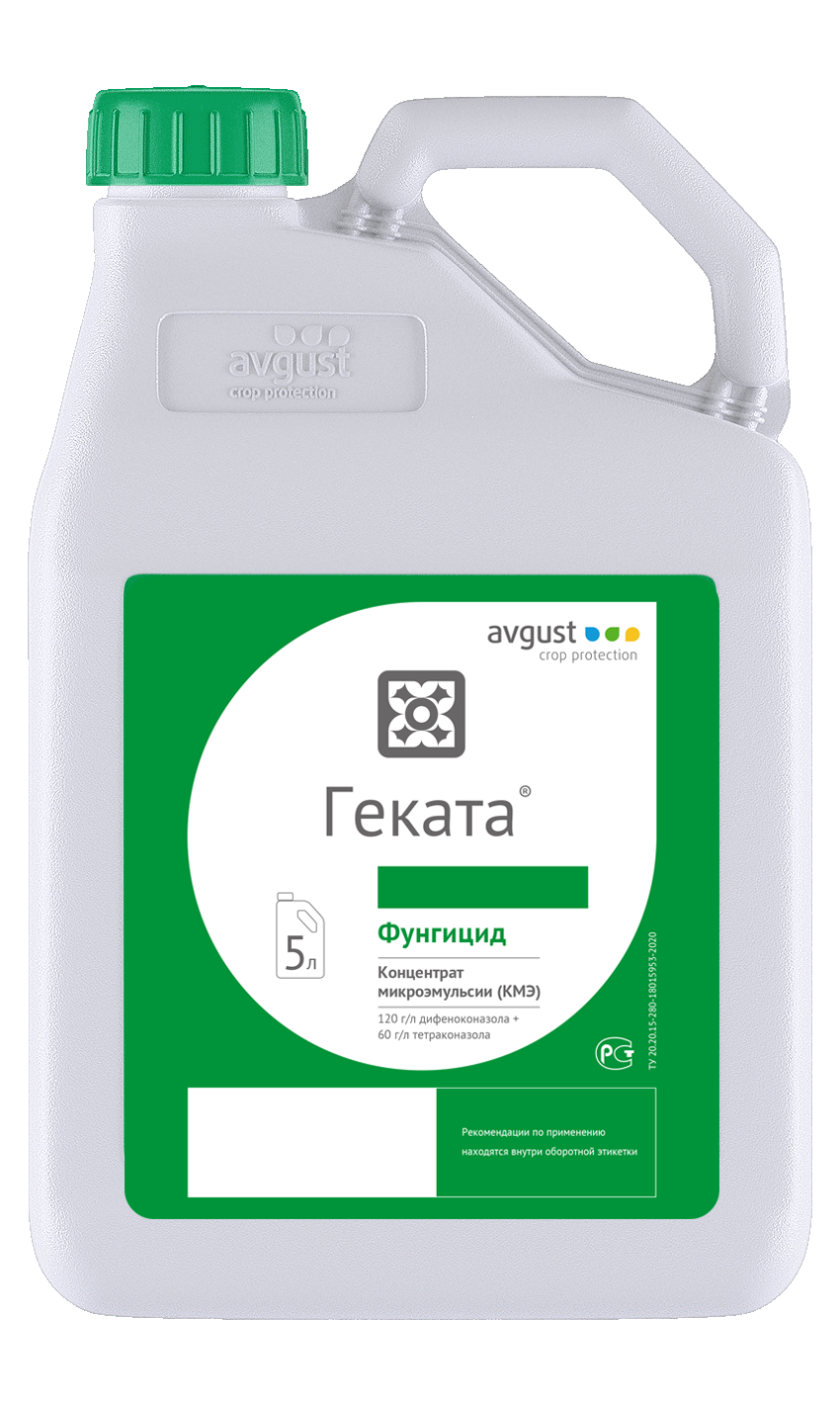
Gekata
difenoconazole, 120 g/l + tetraconazole, 60 g/l

difenoconazole, 120 g/l + tetraconazole, 60 g/l
Benefits of the drug:
• Double action-protective and healing
• Unique 2 different compounds in the protection of grapes
• To sercospore disease in sugar beets one of the best solutions in the fight against
• To pistachio crop disease complex high efficiency against
• Protection of a young plant, in plant tissues uniform redistribution
• Has a mild effect on the crop
Duration of protection:
The protective effect of Gekata® is on weather conditions and depending on the infectious disease, from the day of processing
It lasts up to 3 weeks. during exacerbation of the disease the drug is used for a week to prepare crops protects.
Form of preparation:
Microemul’sia concentrate
Mechanism of action:
Diphenoconazole and tetraconazole systemality differing in degree and spectrum of action belongs to the class of triazoles. This group of substances construction of fungi-pathogenic cells biosynthesis of sterion, an element of which dies makes. Tetraconazole diphenoconazole flour expands its effectiveness against Dew and it also works in the gas phase.
Compatibility:
Gekata® strongly acidic or strongly alkaline other than those with a reaction compatible with pesticides. Clear each in the case, to harvest the mixed components for compatibility and phytotoxicityit is necessary to check.
Impact speed:
The drug enters the plant and after processing for 2 hours
inside begins to affect.
Probability of occurrence of resistance:
If the rules of use are followed, this is unlikely. But you are different variety of fungicides in chemical classes
with different mechanisms of action you need to replace.
Working fluid consumption:
In field crops – 100-300 l/ha, in gardens, and in vineyards to 1000 l/ha.
Variety of cereal crops, sugar beets, cabbage, orchards and grapes two-component long-term protection against diseases fungicide with protective power.
| Crop type | Type of disease | Standard of spending l/ ga |
| Spring and autumn wheat | Powdery mildew, yellow and brown rust, pyrenosporosis, septarioz |
0,8-1 |
| Spring and autumn barley | Powdery mildew, yellow and brown rust, rhynchosporiosis, black spotting, |
0,8-1 |
| spotting | 1 | |
| Sugar beet | Flour is dew | 0,6-0,8 |
| Cercosporosis, phomeosis | 0,8 | |
| Cabbage | Alternaria | 0,6-0,8 |
| Apple, pear | Damp, cold | 0,4-0,7 |
| Apple, pear | Fruit rot during storage (moniliosis, penicillium, gray mold, phomeosis), fusarium | 0,6 |
| Grapes | Oidium, black spot, rot | 0,5-0,7 |